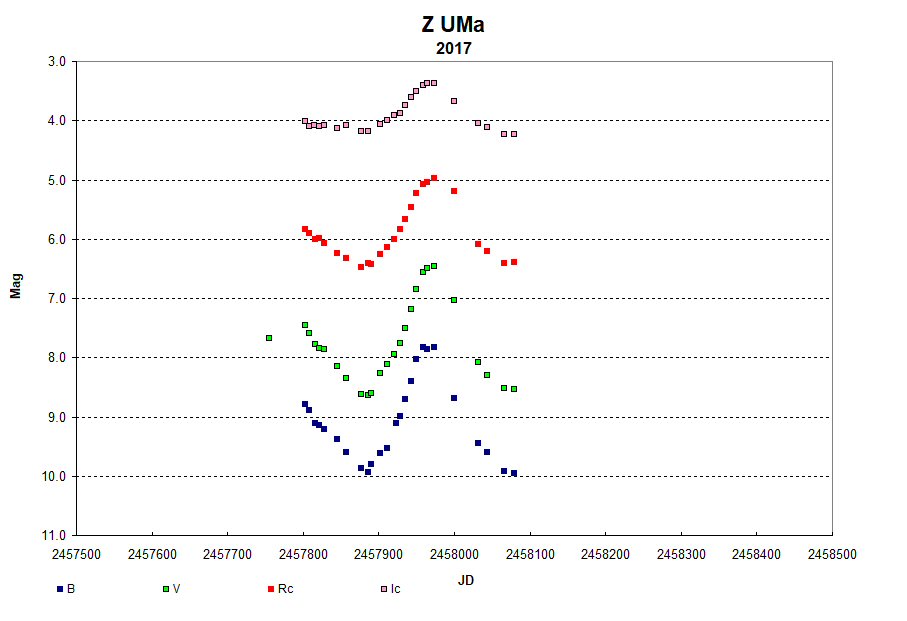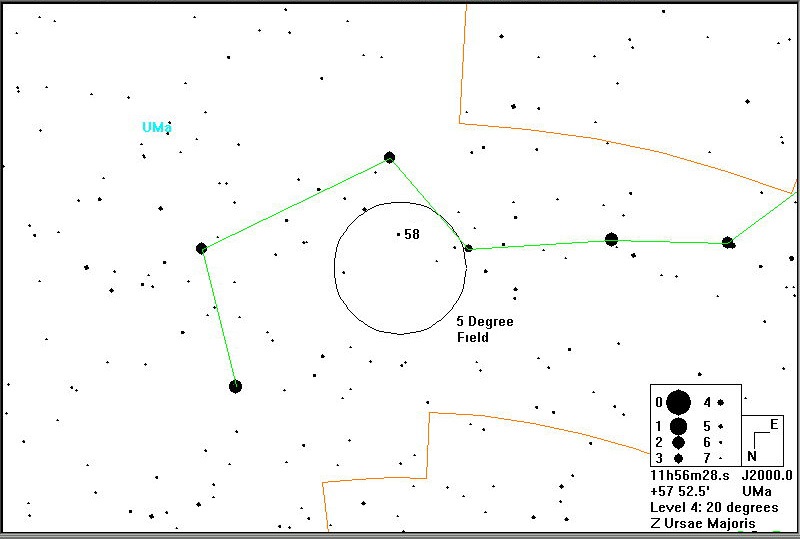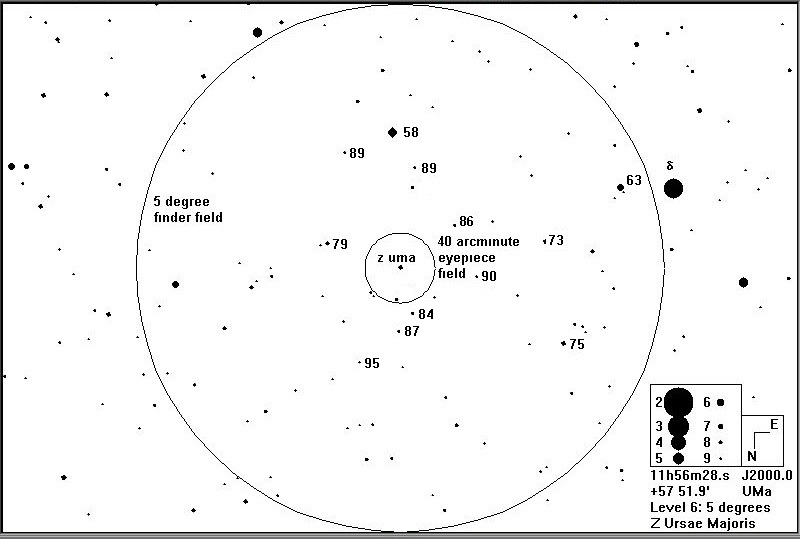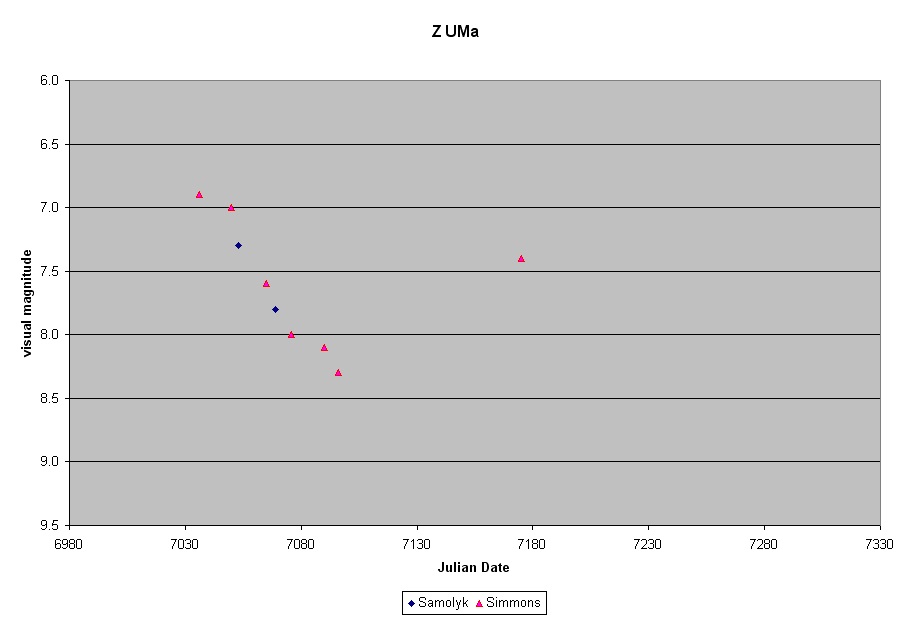Z Ursae Majoris (Z UMa)
Z UMa is a circumpolar variable star visible from the northern hemisphere, is easy to find, and high in the springtime sky. Z UMa is sometimes bright enough to view with binoculars, but at other times you need a telescope.
The MAS is collecting observations from its members to draw our own light curve of this interesting variable star. We will publish the light curve on this page, along with the names of the observers who participate in the project. The charts below will help you find it. You can print them out for use in the field. The charts are printed with south at the top and east to the right for use in an inverting astronomical telescope.
Z UMa is a semi-regular red giant that varies in brightness from about magnitude 6.2 to 9.4. You need observe such stars only about once every ten days or so, but more frequently is okay, especially if you're learning the art of estimating.
The observing technique is simple. When you have found the star, put it out of focus and compare its brightness with the other stars whose magnitudes are printed on the charts. Try to find two comparisons, one brighter and one fainter, and use them to interpolate the magnitude of Z UMa. It's easier to determine the brightness of smeared images than of point-sources of light. The magnitudes on the chart appear with the decimal point omitted to avoid confusion (it might be mistaken for a star).
So a star listed as an "84" is really of magnitude 8.4. Once you have done this, record the date and time (you should use Universal Time but in any event record whether the time was UT or local), the brightness of Z UMa, and the comparison stars you used. Visual observing usually results in a scatter of at least a few tenths of magnitude, so don't be alarmed if your data doesn't exactly match someone else's! Report your data to the webmaster. Click here to send your observations.
Magnitudes given for Z UMa are from AAVSO charts.
The following graph shows the results so far, along with the observers who have contributed. This will be updated as new observations come in. Click on it to expand to full screen. The vertical scale shows magnitude, the horizontal scale shows time in days.

Z UMa as imaged by Gerry Samolyk in 4 photometric filter bands: B, V, Rc, & Ic.





